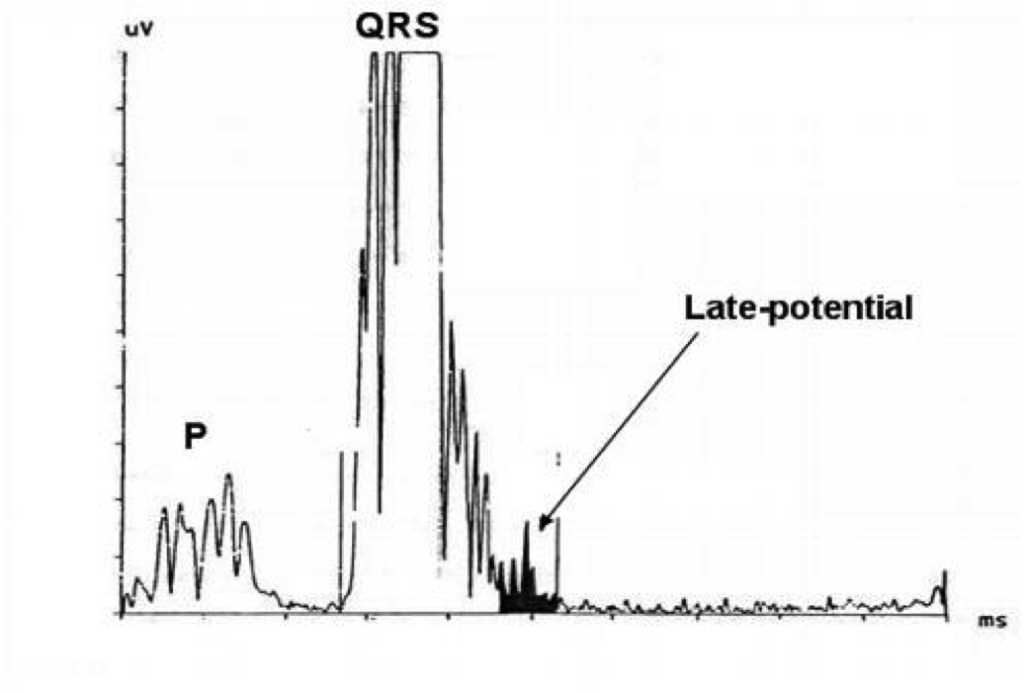Signal-averaged electrocardiogram (SAECG)
Signal-averaged electrocardiogram (SAECG) testing is performed to identify low-amplitude “late-potentials”, typically at the end of the QRS complex. These late-potentials are associated with delayed activation of the ventricles, and can aid in the identification of a population of patients at an increased risk for ventricular tachycardia. This noninvasive outpatient technique has been used to identify patients with a history of coronary disease or left ventricular dysfunction who may be at increased risk for sudden cardiac death (SCD).

Figure 1. Example of a processed signal-averaged ECG revealing a high-frequency low-amplitude late-potential, as seen labeled here.
The SAECG literally averages multiple QRS complexes that are then digitalized and filtered and further processed with spectral analysis to eliminate noise. The resultant late-potentials represent areas of delayed activation due to slowed conduction from either regions of scar or fibrosis; both of which are markers for the electrical substrate that initiates and perpetuates ventricular tachycardia.The SAECG can be useful to risk stratify the following populations for sudden cardiac death:
- Post-myocardial infarction patients
- Structural heart disease patients with depressed heart function
- Arrhythmogenic right ventricular dysplasia (ARVD)
- Brugada Syndrome





 Silver Spring Office
Silver Spring Office  DC Office (at Providence Hospital)
DC Office (at Providence Hospital)  Hagerstown Office
Hagerstown Office